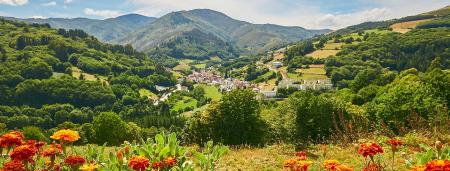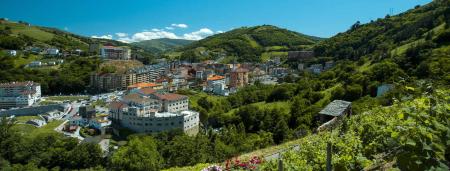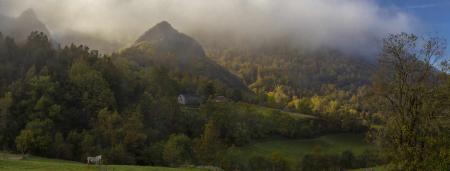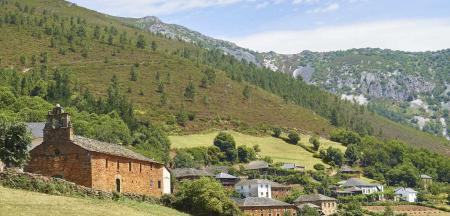Cangas del Narcea, Ibias and Degaña offer spectacular wealth in terms of both landscape and ethnography. Cangas del Narcea, which shares the Nature Park with Degaña and Ibias, also represents the history of mining and vine-growing in Asturias, with its own wine with the Protected Denomination of Origin of Cangas, together with a museum complex dedicated to wine. The village has charming nooks and crannies, such as the Mayor street or the Old Quarters of Entrambasaguas and El Cascarín.
The three councils form the Nature Park of Fuentes del Narcea, Degaña and Ibias.
Buildings of interest are, undoubtedly, the parador, the old monastery of San Juan Bautista de Corias and the Virgen del Acebo Sanctuary. Some "guapas" (attractive) villages are Bisuyu, where the playwright, Alejandro Casona, was born; the climb to the El Puertu, Xedré, Mual, Xinestosu and L.lamas del Mouru which is home to the black pottery makers. Nature lovers simply have to visit the Muniellos forest.
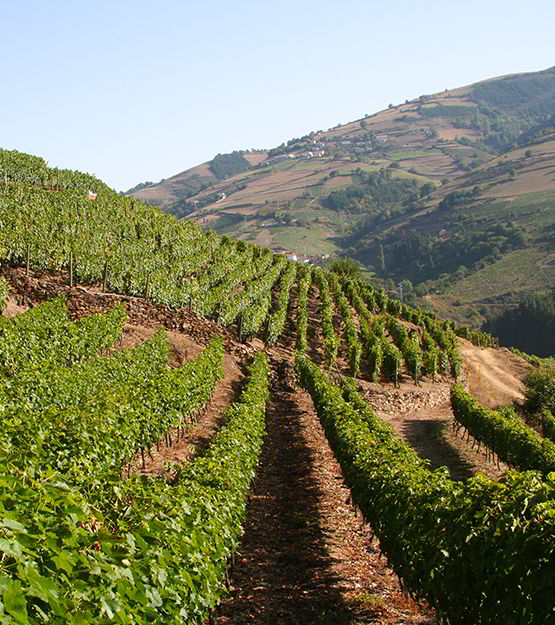

Other less-explored, but equally beautiful ones, are Degaña and Ibias. In the first of the two, Trabáu, El Corralín and Fonduveigas are villages with a rich cultural value. In terms of Ibias, the hórreos with their palloza (made with stalks of rye) roofs are always popular among visitors. Others, however, have slate roofs. There are beautiful villages, many of which sit amid vines and are truly spectacular, such as Uría, Alguerdo, Valvaler, Seroiro and Pradías, together with Riodeporcos, which is accessed via a suspended bridge.

Lands full of history, unique traditions, individual cultures and a love of one's roots, are the councils of the Vaqueira Region: Valdés, Salas, Tineo, Cudillero and Allande, although there are also vaqueiros de alzada and vaqueira roots in Somiedo, Teverga and Cangas del Narcea. The name came about because all the livestock in these places, in mountain passes and high pastureland, were looked after by the vaqueiros de alzada.
The vaqueiros de alzada began as a specific social group in the 15th century in the central-western area of Asturias. They are shepherds and their name, "alzada", comes from the verb "alzar" in Spanish, meaning to leave, as they would literally leave their homes and, with just what they needed to live, once the fine weather arrived, they would spend the spring and the summer months with the animals on the mountain passes, living in huts and looking after their animals. Their geographical isolation, individual culture and more independent and free way of living, resulted in them being frowned upon by the rest of the population, referring to them as xaldos (sedentary villagers) and marnuetos (coastal sedentary villagers). Today, their traditions, culture and their efforts to portray this, occupies the place it deserves in terms of its importance in the history of Asturias, having overcome all the barriers they came across, which for many years, led to social exclusion.


Allande is a place to be enjoyed. Here, travellers can visit Montefurado, at the Palo Pass, or unique villages such as Bustantigo, Berducedo, Mon and Is. Visitors have to visit the medieval village of San Emiliano. Among its most beautiful high pasture land is Campel. The Santa Coloma Church offers visitors the chance to see the beautiful yews full of history. Its most important fortified settlement is the one in San Chuis. Valdés has one of the most beautiful ports in Western Asturias in its capital, L.luarca. Apart from its beaches, the inland areas offer beautiful villages such as Trevías or Brieves, together with the Paredes Valley, its route along the Esva gorge or high pasture lands such as those of Arcayana, Argumosu, Enverniegu and Aristébanu. The latter, which borders with the area of Tineo, hosts the vaqueira wedding and festival each year.
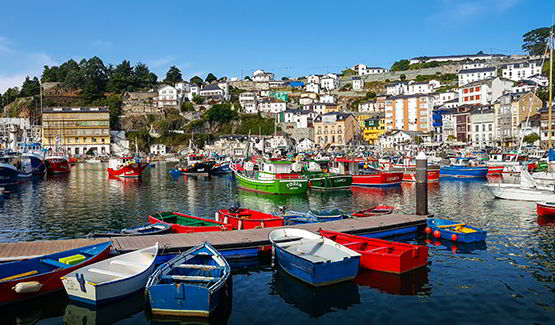
Well-worth a visit in Salas is the old quarters, with buildings such as the Santa María Church, the Collegiate Church of Santa María la Mayor and the palace tower of Valdés-Salas. Also, the millenary yew growing in the middle of the cemetery, the climb to the Virgen del Viso Sanctuary and the beautiful Indiano villages (houses from Asturians who emigrated to the America and returned with a fortune) of Malleza, Mallecina and La Granja. An essential visit in Cornellana is the San Juan Bautista Monastery, where pilgrims stop off. As in the previous case, pilgrims pass through Tineo on their way to Santiago. Even if only from outside, it is essential to visit the Romanesque monasteries of Oubona and San Miguel de Bárzana; the beautiful and impressive carbayu (oak) in Valentín; Navelgas, with its important Roman mining history and where gold is still extracted, and Naraval, which is home to the vaqueiro museum.

Travellers are impressed, amazed and fall in love with the Cudillero Port, with its incredible amphitheatre suspended over the sea.
Equally beautiful are its beaches. The stunning Cape Vidío, its lighthouse and the village of Oviñana, together with those forming the Luiñas Valley, such as Soto de Luiña and San Martín de Luiña. From here, visitors can climb up to the high pastureland of Brañaseca, Gallinero and Cipiello, offering spectacular views on a clear day.


